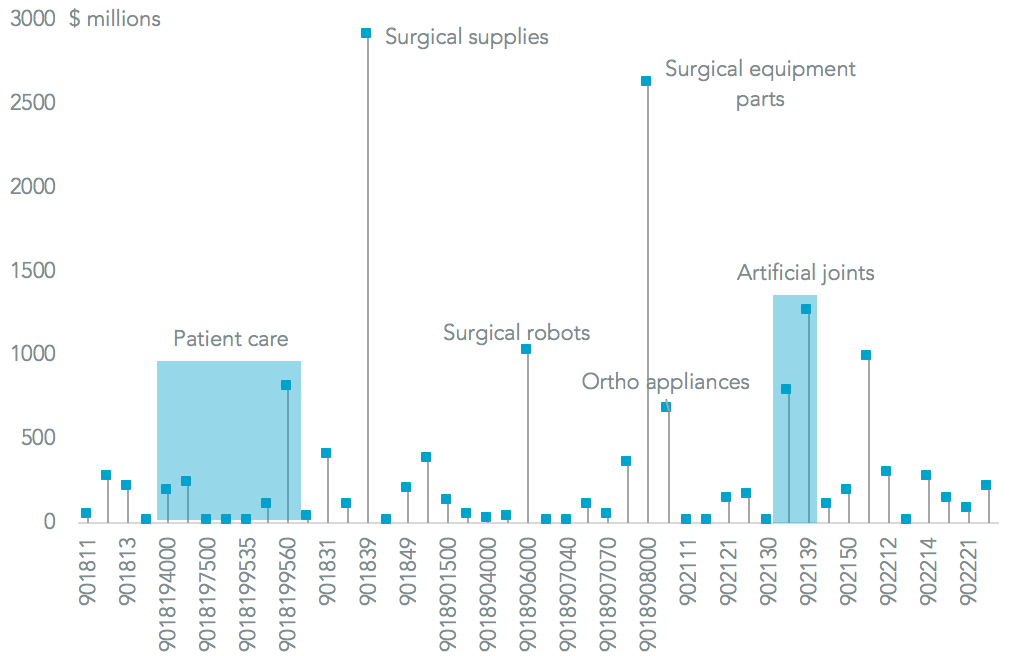An early potential area of agreement in U.S.-EU trade talks could come from regulatory standards for medical devices, Euractiv reports. That comes as negotiating teams led by U.S. Trade Representative Lighthizer and EU Commissioner Malmstrom seek to fulfill the mandate laid out by President Trump and President Juncker to find an “early harvest” in reducing technical barriers to trade, as outlined in Panjiva research of September 11.
There is already significant two-way trade between the two, Panjiva data shows, with aggregate imports and exports reaching $30.8 billion in the 12 months to July 31. That was 6.3% than a year earlier, marking an acceleration from 4.8% growth in the prior three years.
Trade between the two is roughly balanced, though U.S. imports are accelerating more quickly and reached a record high in July.

Source: Panjiva
The growth in U.S. exports was slower than imports with a 3.4% rise in the past 12 months compared to a 1.9% decline in the prior three years. The Trump administration will be keen to improve that growth rate.
There is also an incentive to increase EU-bound exports to offset sales to China. These reached $3.8 billion in the past 12 months after a 12.2% expansion. The implementation of import duties by the Chinese government as part of the section 301 tariff spat will likely trim that figure.
Currently the leading exports to the EU from the U.S. include surgical supplies (needles etc) worth $2.90 billion in the 12 months to July 31, Panjiva analysis shows. That was followed by artificial joints ($1.26 billion) and surgical robots ($1.02 billion) as well as a host of parts and accessories.
Yet, there are still opportunities to increase sales in some areas. Taking areas where sales to the EU are lower than the average to the rest of the world – i.e. sales of products that are “under-represented” – include ultrasound machines ($171 million, adding 63% to current exports), orthopedic appliances ($168 million, or 25% growth) and surgical robots ($165 million, adding 16%).

Source: Panjiva




